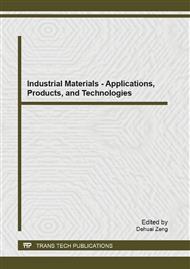p.210
p.214
p.218
p.222
p.226
p.233
p.238
p.245
p.251
Study on the Control of Gelatinous Membrane in the Process of Vinegar Trickling Fermentation
Abstract:
Vinegar trickling fermentation was one of important approach for producing vinegar. But gelatinous membrane usually settled among fillers and caused vinegar fermentation termination after one month continuous fermentation when rice wine was used as vinegar fermentation raw material. After enrichment, isolation, purification and cultivation to the microbe, qualitative analysis and morphological observations were studied to the gelatinous membrane. The results indicated that the membrane formation microbe was Acetobacter xylinum and the main composition of gelatinous membrane was bacterial cellulose (BC). Several methods had been used to control BC formation in the process of vinegar trickling fermentation. The addition of phosphodiesterase can inhibit BC synthesis effectively, but cannot prevent BC formation. BC synthesis can be prevented by adjusting the composition of fermentation broth and the effective ratio of rice wine to diluted ethanol (6%v/v alcohol) was 4:6. The addition of cellulase (0.08%) can not only hydrolyze formatted BC, but also prevented BC synthesis, the final content of total acid was increased and the fermentation period was decreased. The use of cellulase (0.08%) can make the continuous vinegar trickling fermentation sustained at least 6 months.
Info:
Periodical:
Pages:
226-232
Citation:
Online since:
August 2013
Authors:
Price:
Сopyright:
© 2013 Trans Tech Publications Ltd. All Rights Reserved
Share:
Citation:


